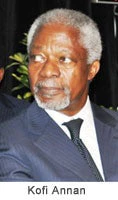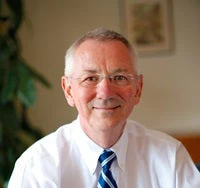Getting On With It.
The 194 national negotiating teams earned their salaries in Durban. But well over half of the 20,000 at the meeting weren’t negotiators at all. What were they up to?
Some were reporting and some were protesting, but most were busy sharing best practices, doing deals, presenting new technologies and findings, and urging negotiators to “get on with it”. They included hundreds of technology firms, financiers, NGOs, academics, development professionals and governments.
The message from this group was: There’s a world of action out there that’s growing and vibrant. It will continue, but to reach the required scale, governments and negotiators must provide a regulatory environment that is transparent, predictable, and consistent.
World Bank Group Priorities:
This was also the core message of the World Bank Group team in Durban, as we sought to move forward the agendas of the 130 countries that have requested the WBG to provide priority support to their climate change activities. Here are a few of our campaigns that are gaining good traction:
Power to Africa
Last year more than $250 billion was invested in renewable energy worldwide, more than half of which was in developing countries—marking a five-fold increase in just 6 years. This now needs to triple again if we are to succeed. But 65% of Africa’s households still don’t have electricity. The threat of climate change needs to accelerate rather than slow their access, and they should have access to climate finance towards this end.
Durban saw the launch of massive plans for renewable power in both the north of the continent (Morocco’s Oazzazate project) and the south (South Africa’s renewable energy strategy). Both are being supported by the Climate Investment Funds Clean Technology Fund. In between countries such as Kenya and Mali were explaining their ambitious plans for renewable energy.
Small Farmers as Players, not Just Victims
Farmers are among the most affected by climate change, but can also play a crucial part in addressing it. Carbon, which is harmful to us in the upper atmosphere, is highly beneficial when embedded in soil or vegetation, helping to provide higher and more resilient yields. African agriculture in particular could benefit greatly from triple win investments— that raise yields and food security, increase crop resilience and sequester carbon. 
Joining Up Carbon Markets
While carbon markets have been in the doldrums over the past year or so due to low demand and confidence, they will return much larger when the world gets serious about mitigation. The reason is simple: they make solving the problem cheaper. (They also transfer money and technology to developing countries.) In the meantime all around the world countries are introducing their own market based instruments, which in turn could form the basis of a an eventual networked global system. Twenty five countries are now part of the Partnership for Market Readiness, an $80 million program with the purpose of building capacity and sharing experiences. Durban provided an excellent forum for countries such as China, India, Brazil, South Africa, the EU and Australia to explain what they’re learning as they introduce market based approaches and to get others to join.
Small Island States: A priority not just on Adaptation.
Everybody knows that SIDS need help on adaptation, and there are some terrific programs being implemented (albeit nowhere near at the scale required). But they also want to be part of the solution by gaining access to renewable energy—which in turn will help them on adaptation. Some SIDS spend as much as 10-20% of their GDP on imported energy, and many pay 20-50 cents per KWh. At Durban we took stock of this progress and welcomed a new donor (Japan) to a WB/UNDP program with AOSIS that seeks to mobilize finance for renewable energy, thus freeing up resources for investment in adaptation and other priorities.
Open Data for Decision Making.
The world is swimming in data on climate change, but it is generally not very accessible, of variable accuracy, and often not very user friendly to policymakers. A year ago Bob Zoellick, President of the World Bank, announced that our vast repository of development data would be fully accessible at no cost to all, including all raw data. In the months leading to Durban we have invested heavily in bringing the same approach to climate related data. We launched this new portal in Durban (together with an “App Contest” to help bring user friendly applications to decision-makers desks), and will be working intensively with our client countries and partners to use this portal, including its projection capacity to help design programs for climate resilient and low carbon policies. Check it out.
And of course… Finance and the Green Fund. But this is for next time...



Join the Conversation